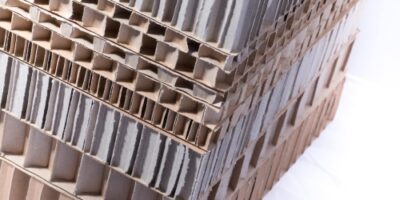A SUSTAINABLE SOLUTION: SWITCHING TO PAPER PACKAGING FOR HOUSEHOLD APPLIANCES
As consumers we often do not think about the environmental impact of the products we buy. When we however start to consider what happens to a plastic packaging, such as expanded polystyrene (EPS), we realize that our purchasing choices have a real impact on the environment.
Nowadays as environmental matters are becoming more and more urgent, we need to consider alternative solutions, such as honeycomb paper packaging to be used for household appliances. In this article, we will show you the benefits of switching to paper packaging, how it is produced and the challenges needed to overcome in order to bring it to market.
Environmental effects of expanded polystyrene (EPS) packaging
Expanded polystyrene (EPS), commonly referred as styrofoam, is one of the most commonly used plastics for the production of packaging for household appliances. However, EPS is one of the most environmentally damaging plastics as it is very difficult to dispose of. EPS is not biodegradable and remains in the environment for hundreds of years causing soil and water pollution. In addition, the production of EPS requires large amounts of raw materials such as oil and natural gas, which contributes to increased greenhouse gas emissions.
Benefits of switching to paper packaging for household appliances
Switching to the paper packaging for household appliances can bring many environmental and social benefits. Paper packaging is biodegradable and can be recycled to produce paper or organic fertilisers. The production of paper packaging also requires less energy and water than the production of EPS packaging.
In addition to the environmental benefits, switching to paper packaging can also have benefits for consumers. Paper honeycomb packaging is lighter and easier to handle than EPS packaging, making it easier to transport and store. They are more convenient for the consumer because they can be crushed before being thrown away, they take up little space and, moreover, they do not crumble like polystyrene.
The challenges of switching to paper packaging
The transition to paper packaging can be a challenge for manufacturers. The honeycomb board has many advantages, but its processing is different than that of EPS (polystyrene) packaging. First of all, we will help you match the packaging to the product and production processes, minimizing the production costs of the packaging itself. Contact us and we will help you with the implementation!
Examples of companies that successfully use paper packaging for household appliances
Despite the challenges of switching to paper packaging, many companies have started to consider this option. These include companies such as Samsung, LG and Apple, which have started using paper packaging for some of their products. These companies aim to reduce their environmental impact and improve their brand image by using more sustainable packaging.
Comparison of the cost of EPS packaging and paper packaging
The production cost of honeycomb paper packaging is usually higher than or equal to the production cost of EPS packaging. However, disposal and environmental costs are lower for paper packaging, making it more cost effective in the long term. In addition, paper packaging improves the brand image, and consumers are more likely to choose brands and products that “care for the environment”.
Summary: Advantages of paper packaging for household appliances
Paper packaging is a sustainable solution for household appliances packaging. The benefits of using it include a lower environmental impact, better protection for the products and easier transport. Despite the challenges associated with the production and market launch, more and more companies are choosing to use honeycomb paper board packaging. In the future, we can expect further development of technology, which will make it possible to take care of the environment and correct the environmental mistakes of the past.








